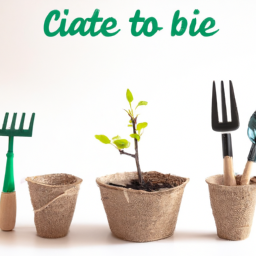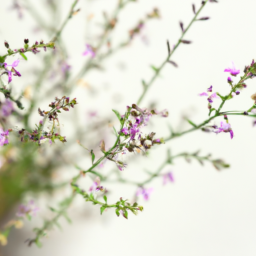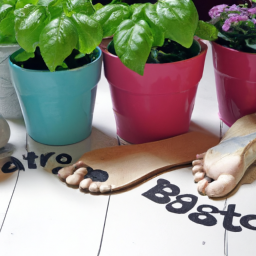
Are you looking for ways to make your gardening practices more sustainable and environmentally friendly? Zero-waste gardening: reducing your environmental footprint is a concept that can help you achieve just that. In this blog post, we will explore the principles and techniques behind zero-waste gardening, and how you can implement them in your own backyard. By minimizing waste, conserving resources, and promoting biodiversity, zero-waste gardening allows you to create a beautiful and productive garden while reducing your impact on the environment. So, let’s dive in and discover the world of zero-waste gardening together!
The Benefits of Zero-Waste Gardening: Exploring How it Reduces Your Environmental Footprint
Zero-waste gardening is a sustainable approach to gardening that aims to minimize waste and reduce the environmental footprint associated with traditional gardening practices. By adopting zero-waste gardening techniques, you can not only create a beautiful and thriving garden but also contribute to a healthier planet. In this article, we will explore the numerous benefits of zero-waste gardening and provide you with a step-by-step guide on how to implement it in your own garden.
Reducing Waste and Landfill Contributions
One of the primary benefits of zero-waste gardening is its significant impact on waste reduction. Traditional gardening often involves the use of plastic pots, synthetic fertilizers, and disposable gardening tools, all of which contribute to landfill waste. In contrast, zero-waste gardening focuses on reusing and repurposing materials, reducing the need for new purchases and ultimately diverting waste from landfills.
By utilizing composting techniques and organic fertilizers, you can minimize the use of synthetic fertilizers that often come in plastic packaging. Additionally, instead of buying new plastic pots, consider using biodegradable alternatives such as coconut coir pots or repurposing containers from your kitchen, like yogurt cups or egg cartons. These small changes can add up to a significant reduction in waste over time.
Furthermore, embracing zero-waste gardening encourages the utilization of natural pest control methods and companion planting, reducing the need for harmful chemical pesticides. By creating a balanced ecosystem in your garden, you can naturally control pests and minimize the negative impact on the environment.
Conserving Water Resources
Water scarcity is a growing concern in many parts of the world. Zero-waste gardening techniques place a strong emphasis on water conservation, helping to address this critical issue. By implementing water-efficient practices, you can significantly reduce your garden’s water consumption.
One effective method is to collect rainwater and use it for watering your plants. Install a rain barrel or a water collection system to capture rainwater from your roof. This harvested water can be used during dry periods, reducing the need for tap water and conserving this valuable resource.
Another water-saving technique is mulching. Applying a layer of organic mulch around your plants helps retain moisture in the soil, reducing the frequency of watering. Mulch also suppresses weed growth, further conserving water by minimizing competition for resources.
Promoting Biodiversity and Soil Health
Zero-waste gardening promotes biodiversity and soil health, creating a thriving ecosystem within your garden. By avoiding the use of synthetic fertilizers and pesticides, you allow beneficial insects and organisms to flourish, contributing to a balanced and diverse garden ecosystem.
Composting is a fundamental practice in zero-waste gardening that enriches the soil with organic matter. By composting kitchen scraps, yard waste, and fallen leaves, you can create nutrient-rich compost to feed your plants. This not only reduces waste but also improves soil structure, fertility, and water retention capacity.
Furthermore, consider incorporating native plants into your garden. Native plants are adapted to the local environment and require less maintenance, water, and fertilizers. They also provide food and habitat for local wildlife, contributing to the overall biodiversity of your garden.
Conclusion
Zero-waste gardening offers numerous benefits for both the environment and your garden. By reducing waste, conserving water, and promoting biodiversity and soil health, you can create a sustainable and thriving garden while minimizing your environmental footprint. Embrace the principles of zero-waste gardening and enjoy the beauty and rewards it brings.
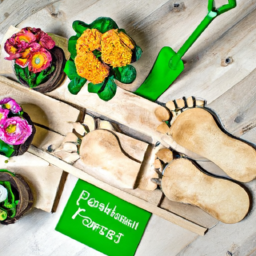
Practical Tips for Implementing Zero-Waste Gardening Techniques
Zero-waste gardening is an eco-friendly approach that aims to minimize waste and reduce our environmental footprint while enjoying the beauty and benefits of gardening. By implementing a few practical tips, you can create a sustainable garden that not only supports biodiversity but also contributes to a healthier planet. Let’s explore some key techniques and strategies for achieving zero-waste gardening:
1. Composting: Nature’s Recycling System
Composting is a fundamental aspect of zero-waste gardening. It allows you to recycle organic waste from your garden and kitchen, turning it into nutrient-rich compost that can be used to nourish your plants. To start composting, designate a composting area in your garden or use a compost bin. Add a mixture of brown materials (such as dry leaves, straw, or shredded paper) and green materials (such as fruit and vegetable scraps, coffee grounds, or grass clippings) to create a balanced compost pile. Turn the pile regularly to aerate it and speed up the decomposition process. Over time, you’ll have nutrient-dense compost that can be used as a natural fertilizer, reducing the need for synthetic alternatives.
Additionally, consider vermicomposting, which involves using worms to break down organic waste. Vermicomposting can be done indoors or outdoors, depending on the type of worms used. It’s a highly efficient method that produces rich vermicompost and helps divert waste from landfills.
Remember to avoid adding meat, dairy, or oily items to your compost pile, as they can attract pests and slow down the decomposition process. By composting, you’ll not only reduce waste but also enhance the health and vitality of your garden.
2. Mulching: Nature’s Protective Blanket
Mulching is another essential technique in zero-waste gardening. It involves covering the soil around your plants with a layer of organic material, such as wood chips, straw, or leaves. Mulch acts as a protective blanket, preserving soil moisture, regulating temperature, suppressing weed growth, and improving soil fertility.
When choosing mulch, opt for locally available and sustainable materials. By using organic materials from your garden or nearby sources, you reduce the carbon footprint associated with transportation. Additionally, consider using grass clippings, shredded leaves, or kitchen scraps as mulch. These materials not only enrich the soil but also contribute to waste reduction.
To apply mulch, spread a layer around your plants, ensuring it’s at least two to three inches thick. Leave a small gap around the plant stem to prevent rotting. As the mulch breaks down, it adds organic matter to the soil, promoting a healthy and vibrant garden ecosystem.
3. Water Conservation: Nurturing with Care
Water conservation is a crucial aspect of zero-waste gardening. By adopting water-wise practices, you can minimize water waste and create a sustainable garden. Here are a few tips to help you conserve water:
Collect and reuse rainwater: Install rain barrels or containers to collect rainwater from your roof. This water can then be used to irrigate your garden, reducing the need for tap water.
Use drip irrigation: Drip irrigation systems deliver water directly to the plant roots, minimizing evaporation and ensuring efficient water usage.
Group plants with similar water needs: By grouping plants with similar water requirements together, you can avoid overwatering or underwatering certain areas of your garden.
Monitor soil moisture: Regularly check the moisture level of your soil before watering. This helps prevent overwatering and ensures plants receive the right amount of water.
Apply mulch: As mentioned earlier, mulching helps retain soil moisture, reducing the frequency of watering.
Choose drought-tolerant plants: Selecting plants that are adapted to your local climate and require less water can significantly reduce your garden’s water consumption.
By implementing these water conservation techniques, you can create a sustainable garden that thrives while minimizing water waste.
In conclusion, zero-waste gardening is an effective way to reduce our environmental footprint and contribute to a healthier planet. By composting, mulching, and conserving water, you can create a sustainable garden that not only benefits the environment but also provides a beautiful and thriving space for plants, insects, and wildlife. Embrace these practical tips and enjoy the rewards of a zero-waste garden!
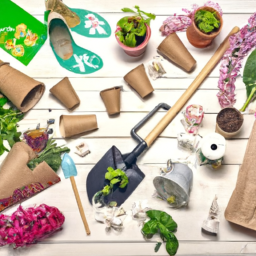
Zero-Waste Gardening: Reducing Your Environmental Footprint
Gardening is not only a rewarding and fulfilling hobby, but it can also be a way to contribute to a more sustainable and eco-friendly lifestyle. By adopting zero-waste gardening practices, you can significantly reduce your environmental footprint and minimize waste generation. In this article, we will explore sustainable practices that will help you achieve a zero-waste garden.
1. Composting: Turning Waste into Nutrient-Rich Soil
Composting is a fundamental practice in zero-waste gardening. It involves decomposing organic materials, such as kitchen scraps, yard waste, and plant trimmings, to create nutrient-rich compost that can be used as a natural fertilizer for your garden. Here’s how you can get started:
1.1 Setting Up Your Compost Bin
Choose a suitable location for your compost bin, preferably in a shaded area with good drainage. You can either purchase a compost bin or build one using materials like wood pallets or wire mesh. Ensure proper aeration and moisture levels within the bin to facilitate decomposition.
1.2 Composting Dos and Don’ts
Do add a mix of green (nitrogen-rich) and brown (carbon-rich) materials to your compost bin. Green materials include fruit and vegetable scraps, coffee grounds, and grass clippings. Brown materials include dried leaves, wood chips, and shredded paper. Avoid adding meat, dairy, oily foods, or pet waste, as they can attract pests or cause odor issues.
1.3 Maintaining Your Compost
Regularly turn or mix the contents of your compost bin to aerate it and speed up decomposition. Keep the compost moist but not overly wet. Depending on the materials used and environmental conditions, your compost should be ready within a few months to a year. Use it to enrich your garden soil and reduce the need for synthetic fertilizers.
2. Water Conservation: Minimizing Water Waste
Water is a precious resource, and conserving it is essential for sustainable gardening. By implementing water-saving techniques, you can reduce your garden’s water consumption while still maintaining healthy plants. Here are some strategies to consider:
2.1 Mulching
Apply a layer of organic mulch, such as wood chips or straw, around your plants. Mulch helps retain soil moisture, reduces evaporation, and prevents weed growth. It also acts as an insulating layer, protecting plant roots from extreme temperatures.
2.2 Drip Irrigation
Install a drip irrigation system to deliver water directly to the plant roots, minimizing water loss through evaporation or runoff. Drip irrigation is more efficient than traditional sprinklers and allows for targeted watering, ensuring that plants receive the right amount of water without wastage.
2.3 Rainwater Harvesting
Collect rainwater in barrels or tanks to use for watering your garden. Place them strategically to catch rainwater from downspouts or install a rainwater harvesting system. Rainwater is free from chemicals found in tap water and is an excellent natural resource for your plants.
3. Natural Pest Control: Avoiding Harmful Chemicals
Chemical pesticides can be detrimental to the environment and harmful to beneficial insects and organisms. Embracing natural pest control methods allows you to protect your garden while minimizing negative impacts. Consider the following approaches:
3.1 Companion Planting
Planting certain flowers, herbs, or vegetables together can help repel pests or attract beneficial insects. For example, marigolds deter aphids, while lavender attracts pollinators like bees and butterflies. Research companion planting combinations that suit your garden’s needs.
3.2 Biological Controls
Introduce natural predators or parasites to control pest populations. Ladybugs, praying mantises, or nematodes can help keep common garden pests in check. Avoid using broad-spectrum insecticides that harm both harmful and beneficial insects.
3.3 Organic Pest Remedies
Explore organic pest control remedies like neem oil, insecticidal soaps, or garlic sprays. These natural solutions can effectively manage pests without harming the environment. Regularly inspect your plants for signs of infestation and take immediate action to prevent pest outbreaks.
Conclusion
By implementing sustainable practices like composting, water conservation, and natural pest control, you can significantly reduce waste in your garden and lower your environmental impact. Embrace these zero-waste gardening techniques and enjoy a beautiful, eco-friendly garden while contributing to a greener future.
Let’s recap
Are you looking for ways to reduce your environmental footprint while still enjoying the benefits of gardening? Look no further than zero-waste gardening! This sustainable gardening approach focuses on minimizing waste and maximizing resource efficiency. By adopting a few simple practices, you can contribute to a healthier planet while nurturing your plants.
One key aspect of zero-waste gardening is composting. Instead of throwing away kitchen scraps and yard waste, composting allows you to transform them into nutrient-rich soil for your garden. Not only does this reduce the amount of waste going to landfills, but it also eliminates the need for synthetic fertilizers, which can harm the environment. Additionally, choosing to grow your own food can significantly reduce your carbon footprint by eliminating the need for transportation and packaging associated with store-bought produce. By practicing zero-waste gardening, you can make a positive impact on the environment while enjoying the beauty and benefits of a thriving garden.
Q&A Corner:
Q1: What is zero-waste gardening?
A1: Zero-waste gardening is a sustainable gardening approach that aims to minimize waste and reduce your environmental footprint. It involves adopting practices that prioritize recycling, reusing, and composting to minimize resource consumption and waste generation.
Q2: How can I practice zero-waste gardening?
A2: To practice zero-waste gardening, you can start by composting kitchen scraps and yard waste to create nutrient-rich soil amendments. Additionally, you can opt for natural pest control methods, such as companion planting or introducing beneficial insects, instead of relying on chemical pesticides. Using rainwater collection systems and reusing materials like old containers or pallets for planters are also great ways to reduce waste.
Q3: What are the benefits of zero-waste gardening?
A3: Zero-waste gardening offers several benefits. By reducing waste and recycling organic matter, you can enrich the soil, promote healthier plant growth, and reduce the need for chemical fertilizers. It also helps conserve water by utilizing rainwater and reducing the reliance on traditional irrigation methods. Additionally, zero-waste gardening contributes to a cleaner environment by minimizing the use of plastic pots and reducing carbon emissions associated with waste disposal.
Q4: Can I still have a beautiful garden with zero-waste gardening?
A4: Absolutely! Zero-waste gardening doesn’t mean sacrificing aesthetics. In fact, it can enhance the beauty of your garden. You can create visually appealing compost bins or use decorative rain barrels. Repurposing old furniture or containers can add a unique charm to your garden. Furthermore, by choosing native plants and practicing sustainable landscaping techniques, you can create an eco-friendly and visually stunning garden.
Q5: Is zero-waste gardening suitable for beginners?
A5: Yes, zero-waste gardening is suitable for beginners. It’s an approach that anyone can adopt, regardless of their gardening experience. Starting small and gradually incorporating zero-waste practices into your gardening routine is a great way to begin. There are numerous online resources, books, and local gardening communities that can provide guidance and support as you embark on your zero-waste gardening journey.

Alex Turner is a sustainable gardening advocate and the founder of an acclaimed indoor gardening blog. With a focus on eco-friendly practices and urban sustainability, Alex combines his background in environmental studies with his love for plants to educate readers on mindful indoor gardening. His work highlights the importance of nurturing both plants and the planet.

